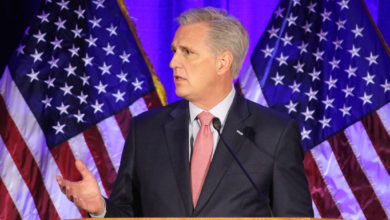A recent report released by the National Alliance to End Homelessness last week gave a grim picture of the state of homelessness in the United States.
The study, “Homelessness Counts,” reported the homeless population at 744,313 in January 2005, but noted that this
|
Among some of the more salient points of the report was that “56 percent of homeless people counted were living in shelters and transitional housing and, shockingly, 44 percent were unsheltered.”
Speaking about recent drastic increases in the homeless population of Philadelphia, Penn., Marsha Cohen, executive director of the Homeless Advocacy Project, told the Associated Press: “We are seeing big increases in singles and families, both on the street and attempting to enter the homeless system.” Cohen added, “It’s a whole influx of new people, and that’s the really scary part.”
What Cohen’s statement highlights is the endemic nature of poverty in the capitalist system. When homelessness first emerged as a major societal problem in the 1980s, it was first seen by bourgeois commentators and liberals as a passing phenomenon that could be addressed. The ensuing decades revealed that type of thinking as pure fallacy. More and more people have become homeless over the years.
Economic shifts
The increasing homeless population in the United States is a reflection of many of the underlying economic and political shifts that have taken place over the last few decades.
The declining economic position of the working class is one facet of this. Real wages have fallen precipitously since the mid-1970s. Add to this the neo-conservative attacks of the 1980s and 90s on the social safety network that emerged out of the labor and civil rights struggles of the 1930s and 60s.
Welfare programs have been cut drastically along with federal housing programs by both Republican and Democratic administrations.
The enduring nature of the homelessness problem is highlighted by the NAEH study’s report that “23 percent of homeless people were reported as chronically homeless.”
The U.S. Department Housing and Urban Development defines the chronically homeless as people who are “homeless for long periods or repeatedly and have a disability.” What this means in real terms is people who have gone for years without a home. In many cases, they have been thrown into the streets because there is no governmental support for them. Government-funded programs that do assist the homeless often face reductions in funding.
One of the newer contributors to the crisis of homelessness has been capitalist speculation in the housing market. This has fed gentrification in many urban areas, effectively pricing working class families out of their neighborhoods and homes. Speculation in the housing market is really a veiled attack on the working class as a whole. It yanks away one of the few possessions that workers can call their own—their homes.
Nan Roman, president of NAEH, told the AP that the root problem of homelessness lies in a lack of affordable housing. While that may be true, it tells only part of the story.
Families, workers also experience homelessness
The problem of homelessness reaches beyond individuals. The NAEH study noted that 41 percent of homeless people in the United States were families. “In total, 98,452 homeless families were counted.”
This in the richest country in the world!
One of the shortcomings of the NAEH report is that it does not state how many working people are homeless in the United States. A substantial number of homeless people have to live and work out of a shelter or car, showing that even steady employment does not guarantee having a place to live. Previous studies have stated that 25-40 percent of this country’s homeless population is employed full- or part-time.
Another facet not covered in detail by the NAEH report is the transitory nature of housing for millions of people. The study did note, “The homeless population is quite fluid—people move in and out of homelessness and most are homeless for short periods of time.”
But the NAEH website briefly discusses this problem. According to http://www.endhomelessness.org, “About 600,000 families and 1.35 million children experience homelessness in the United States.” Although not all of these people are homeless at the same time, these figures show how many people will have to deal with this issue directly during their lives.
Using the 1996 national estimate, researchers extrapolated from the number of homeless counted and came up with an annual projection “that between 2.3 and 3.5 million people per year experience homelessness.” This translates to approximately 1 percent of the U.S. population.
While the NAEH and many social service advocates are trying to raise the issue of homelessness, others see the fight for housing and a decent standard of living as part of a greater fight against the ravages of capitalism.
The real root of the social problem of homelessness lies in the capitalist system—an economic and social system that produces for profits alone, not to meet people’s needs.
Socialists consider housing to be a basic human need and right. Everyone has an absolute right to adequate housing.
Exposing the brutal, ugly nature of capitalism is a worthy goal for any organization, but combining that critique with an organized struggle to end the supremacy of this deadly system is ultimately required.







